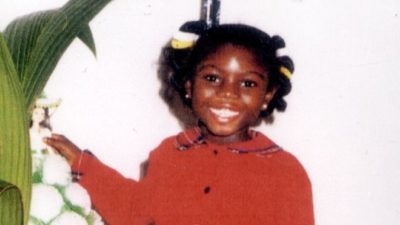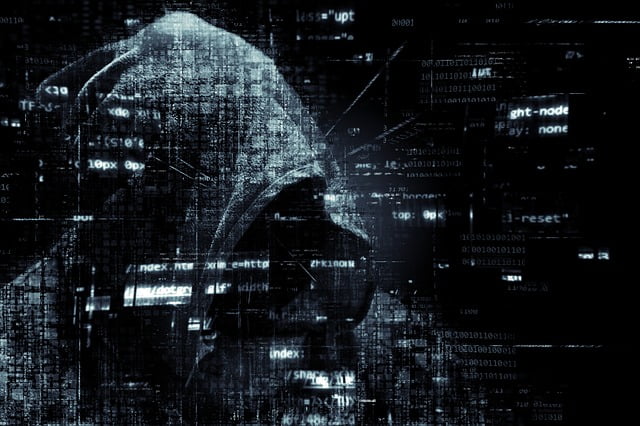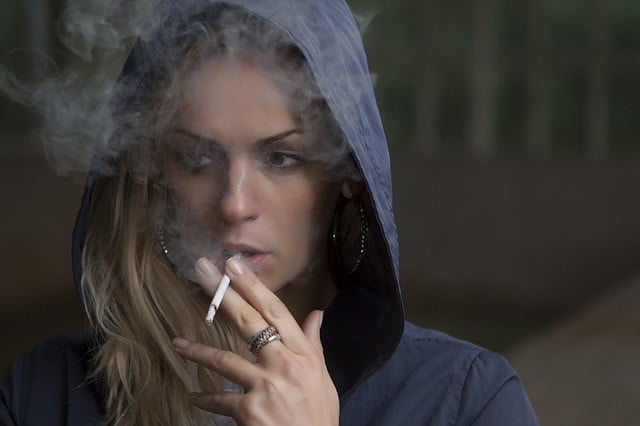Welcome back to our third post on abuse linked to belief or faith, which follows our two previous articles: –Abuse linked to Belief or Faith – An Insight
Abuse linked to Belief or Faith – The Indicators.
Most local authorities and police forces now have in place bespoke guidance covering abuse linked to belief or faith. Most are strikingly similar, for this is a specialised and unique area of safeguarding, steeped in deep cultural belief, with some very distinctive indicators. Because it is unique in many aspects , there is only so much you can include in guidance. However, what we generally see in many policies, is a tendency to run out of steam when it comes to advising professionals what they should do, if they identify a child at risk. They tend to fall back on advice like “follow your local safeguarding procedures” or signpost the reader to their organisations protocols covering child abuse per se.
There is of course little wrong with that advice, for it is important to acknowledge whilst the perpetrators may rely on their faith or belief, it is still fundamentally child abuse. However, we also feel that it is essential to acknowledge the uniqueness of this form of abuse and vitally important to emphasise that professionals should bear in mind the ‘One Chance Rule’. Speed is of the essence and could mean the difference between life and death.
Do you have the knowledge and confidence to act?
The Governments 2012 document ‘National action plan to tackle child abuse linked to faith or belief’ contained the following point : – “As a professional with a responsibility for safeguarding children, would you recognise the signs to spot when a child is vulnerable to this type of abuse?”.
It is vitally important that all safeguarding practitioners have a good understanding of the indicators linked to this specific area of abuse.
Example: Police officers attend a minor domestic disturbance at an address between an adult male and female. The husband has recently lost his job, the mother has recently given birth to her second child. One or both parents make comment that the loss of the fathers job is the fault of the older child and he/she has brought misfortune on the family. They may note that there appeared to be no loving bond between the mother and the older child, with the mother making comment that the older child is “different”. If you add to this that the family have originated from a community where witchcraft or spirit possession are widely accepted, then the police officers should start to consider whether there is potential for the older child to be at risk of abuse linked to belief or faith.
If those officers don’t recognise the risk , but still detail their interactions with the family accurately in a child come to notice form to the Multi-Agency Safeguarding Hub, then the safeguarding professionals within that hub need to be confident that they can potentially identify the danger signs within the report. It should at least prompt them to dig deeper.
All of these are signs that may indicate that abuse is taking place, or about to. There may of course be other reasons , but not being able to identify the indicators at all, means that we will fall at the first hurdle.
The second part of the heading mentions the ‘confidence to act’. In that 2012 action plan, the authors mention empowering practitioners and reducing anxiety in relation to the cultural aspects of this type of child abuse. We believe this is an acknowledgment that there may be a reluctance by some in the safeguarding community to have the confidence to refer cases. This may be for a variety of reasons – lack of confidence, not wishing to appear foolish, a professionals own personal beliefs, or a fear of being accused of stereotyping or even racism. We would hope that since 2012 , many of these reasons have been eradicated and professionals are now more empowered and encouraged to speak out, if they believe that a child is being abused.
Where you are not sure what to do, take advice. Dependent on your role, there will hopefully be somebody you can seek advice from, if not then there should be someone in your local authority who is a designated lead for abuse linked to belief or faith. Our own force has adopted the maxim “SPOT IT – STOP IT” and we would encourage all professionals to be able to spot the signs related to abuse linked to faith or belief, and then take the appropriate action.
What should I do if I have concerns?
Once a child has been singled out and accused of being possessed or being a witch, the safeguarding clock is ticking. Abuse may escalate so rapidly, that it may be a few days before events end tragically. Circumstances will differ from case to case but in many cases the abusers will believe that the child will need to be purged of the evil spirit. This will generally involves an exorcism which often takes the form of prayers, in a bid to force out the evil spirit. This might take place in a church setting led by a Pastor or other religious leader. There are some churches within the UK where this type of non-physical service is performed on a weekly basis for members of the church congregation.
Safeguarding issues arise where the abuser believes that prayer has failed or they bypass this type of prayer based exorcism in the first place. The abuser will then seek other methods of exorcising the demon or witch, which may take the form of physical abuse and neglect.
Anyone who has concerns about a child’s welfare should make an immediate referral to Local Authority Children’s Social Care (CSS). Within 1 working day the lead Social Worker should decide on the required response:
- Is the child in need, and should they be assessed under section 17?
- is there reasonable cause to suspect that the child is suffering, or likely to suffer, significant harm, and whether enquires must be made and the child assessed under section 47?
- are any services are required by the child and family and if so, what type of services?
It is important to remember that at the point you become involved, the child may have already been exposed to serious harm for a lengthy period. Therefore, once the first signs of abuse have been identified, it is essential that multi-agency safeguarding child abuse protocols are initiated and followed swiftly.
The person making the referral should agree with the lead Social Worker, exactly what information should be given to the parents or carers, by whom and when. It needs to be established what information they have already been given and whether they are aware or suspect the involvement of social care. Are they aware of the referral? If this is going to be or is a joint investigation between social care and police, then there needs to be a clear strategy around what information the parent/carer will be given, when and who by.
Don’t just leave it – If you are the person who has made the referral to social care, then you have both a moral and professional responsibility to ensure that it has been received and is being dealt with. If made by phone then within 48 hours you should receive confirmation in writing , that your referral is being dealt with. Any written referral should be acknowledged within one working day of receipt. The guidance states that if you have not heard back within 3 working days, you should contact children’s social care again (Safeguarding Hub Manager). In this day and age of email, we feel that this is too long and given the nature of your referral, we suggest that you might want to push them for an acknowledgement before that point.
- full names (including aliases and spelling variations), date of birth and gender of all child(ren) in the household
- family address and any known previous addresses
- school, pre-school or nursery the child(ren) may attend
- identity of those with parental responsibility
- names, date of birth and information about all household members, including any other children in the family, and significant people who live outside the child’s household
- ethnicity, first language and religion of children, parents or carers
- any need for an interpreter, signer or other communication aid
- any special needs of children or parents
- any significant/important recent or historical events/incidents in the child or family’s life
- whether the child has recently spent time abroad or has newly arrived in the area
- child's current location, whether they are safe or in need of immediate protection (e.g. about to be removed from the country, being taken to a religious ceremony)
- child’s current emotional and physical condition
- identity and the current whereabouts of the of alleged perpetrator
- the reasons for concern including details of any allegations, their sources, timing and location
- known involvement of other agencies or professionals (e.g. GP, already known to social services)
- information regarding parental knowledge of the referral
- the referrer's relationship and knowledge of child and parents
- the child’s account and the parent/carers response to the concerns if known
- the child's views and wishes, if known
Is it safe for the child to remain in the family home?
Do you need to take IMMEDIATE action to remove the child? If so and you are a police officer, then you are able to rely on your powers of Police Protection under Section 46 Children Act 1986, if appropriate. If you are another professional, consider calling a police officer to the scene so that Police Protection can be considered. On other occasions, there may be sufficient time to obtain an Emergency Protection Order. The decision is yours, but be aware that the abuse may escalate after the family become aware of your involvement. The family/carer may also decide to send the child away, potentially back to a country of origin where the abuse can be continued. Where you become aware that this is likely, then it is vital that there is no delay in alerting the police so that immediate action can be taken. This might involve police protection or where the whereabouts of the child are unknown, the police may alert the various UK ports.
Places of Worship and Faith Leaders
Most churches and faith leaders from cultures that have a belief in witchcraft and spirit possession, play a significant role in the community and pursue non-harmful religious practices and beliefs. However, professionals should be alert to potential ‘rogue’ faith leaders. We refer back to the 2012 action plan, where it indicates that safeguarding professionals should not be afraid to raise concerns about a particular place of worship or faith leader where it is relevant. Professionals should attempt to identify and obtain details of the leader, the faith community and place of worship, to which the family and child have links. Where concerns are raised about a place of worship , then cross checking against other individual cases may identify links to a specific community or faith leader.
Criminal allegations
Where you believe that a criminal offence may have been committed, then you should report this to the police. However, in many referrals it may be unclear whether the concerns have progressed to the extent that criminal offences have been committed. In cases where there are no clear criminal allegations, it is still best practice for the social worker and their manager dealing with the referral, to consider whether they need to discuss the referral with specialist child abuse investigators. It may be that a joint police/social care S47 enquiry is required.
For those professionals dealing initially with the child and their family, it is important to be aware that an allegation of child abuse or neglect may lead to a criminal investigation. You should not attempt to investigate the allegations yourself or ask the child leading questions. Ensure that you make a full written record of any disclose or information the child or the family provide.
There is no specific legislation that deals with witchcraft or spirit possession. The law around child abuse is already in place and can be dealt with under the criminal law and children protection procedures under the Children Act 1989. Below is a very brief synopsis of child protection legislation.
Anyone who has concerns about a child’s welfare should make a referral to Local Authority Children’s Social Care (CSS). Within 1 working day the lead Social Worker should decide on the required response:
- Is the child in need, and should they be assessed under section 17?
- is there reasonable cause to suspect that the child is suffering, or likely to suffer, significant harm, and whether enquires must be made and the child assessed under section 47?
- are any services are required by the child and family and if so, what type of services?
Section 10 of the Children Act 2004 – requires a Local Authority to make arrangements to promote cooperation between the authority, each of the authority’s relevant partners and such other persons or bodies working with children in the local authority’s area as the authority considers appropriate.
Section 11 of the Children Act 2004 – Government bodies and agencies must ‘make arrangements for ensuring that their functions are discharged having regard to the need to safeguard and promote the welfare of children.’
Section 17 Children Act 1989 (Child in Need) – a child who is unlikely to achieve or maintain a satisfactory level of health or development, or their health and development will be significantly impaired, without the provision of services; or a child who is disabled.
Section 20 Children Act 1989 - Duty to accommodate a child in need.
Section 31 Children Act 1989 – Care Orders, assessment and Care Plan.
Section 46 Children Act 1989 - Police Protection. Where a police officer has reasonable cause to believe that a child could otherwise be likely to suffer significant harm, the officer may: remove the child to suitable accommodation; or take reasonable steps to ensure that the child’s removal from any hospital, or other place in which the child is then being accommodated is prevented.
Section 47 of the Children Act 1989 – the Local Authority have a duty to investigate where they are informed that a child who lives, or is found, in their area is: (i) subject of an emergency protection order; or (ii) is in police protection; OR they have reasonable cause to suspect that a child who lives, or is found, in their area is suffering, or is likely to suffer, significant harm. In joint enquiries, CSS are the lead agency for the section 47 enquires and assessment whilst the police are responsible for the criminal investigation.
Special Measures – Children and vulnerable witnesses are entitled to ‘special measures’ in criminal proceedings. These are aids to help support witnesses in giving their best evidence in court. Children and young people under 18 are automatically eligible for special measures. Special measures include:
- allowing the witnesses evidence in chief to be shown via a pre-recorded ‘visually recorded interview (VRI)’
- allowing the witness to give their evidence through a live video link live link. This is normally from a room outside the courtroom but within the confines of the court, although it can be used for witnesses giving evidence from other remote locations , including from abroad.
- giving evidence from behind a screen so that the witness does not see the defendant when giving evidence
- removal of wigs and gowns worn by judges and barristers (in Crown Court cases)
- use of an approved intermediary, a specialist trained to support the witness with additional needs, helping the witness to understand the questions the court, defence and prosecution ask, and assisting the witness to articulate their answers
- the use of communication aids to assist a witness overcome physical difficulties with understanding or answering questions
- giving evidence in private. Whilst rare, the court , with good reason, can clear the court room of people that do not need to be present while a witness gives evidence
What comes next?
Following a referral the social worker and their manager should make an assessment of the referral and then decide on a course of action, ensuring that there is a written record of their rationale. Dependent on the case, decisions can include, initiating a strategy meeting, a S47 enquiry, referring to other agencies, notifying the police or even deciding that the referral requires no further action.
Where a child has been removed from immediate danger, there may well be an opportunity to work with the family to educate and provide support. Whilst this should include sending a clear message that the abuse is wrong, it may also be an opportunity to provide them with the necessary parenting and coping skills that promote the child’s future welfare. It may be that the abuser believes that what they have done was for the good of the child and that they caused no harm.
Working with the Family
We wouldn’t be so presumptuous as to tell our colleagues in social care how to engage with children and families, for they are far more expert at that, than we are. Suffice to say though, that the key to working successfully with the child and family will be the efforts put into gaining their trust – both child and family.
Interventions could consist of tackling the pressures the family might be experiencing or helping them understand the reasons a child might have displayed certain behaviours (bed wetting, epilepsy, nightmares), which they wrongly associate with their belief. Where a child has a disability, or learning difficulties, the intervention of a medical specialist may help the family understand the condition and provide coping mechanisms. It may be that the perpetrator(s) has become isolated from the rest of the family or community and therefore a support network needs to be introduced. It may be beneficial to involve independent mediators, which may include a community or faith leader as long as care is taken to establish that the community/faith leader or group do not support the practices.
- establish the beliefs of the family - ensure you do your research and become fully conversant with the family’s cultural practises, gaining an understanding of what their beliefs are. Seek advice if you are dealing with a culture or set of beliefs that you do not fully understand or unfamiliar with.
- be aware that some cultures believe that what they are doing is for the good of the child and that they are helping rid him/her of demons. They may not understand that what they are doing is abusive and against the law.
- know the family structure – what is the relationship between the child and their carer? Are they related to the child? Are they even the person they say they are? Are there any new arrivals in the home? Many cases occur after the arrival of a new adult into the family dynamic, often unrelated to the child. You need to establish the roles of the adults and the hierarchy in the household.
- is the child new to the family – has the child recently arrived from abroad? How did they arrive and why were they brought into the UK. Have they been trafficked? Who is the principle carer, who has parental responsibility and did they travel with the child? If they are not present , then why and where are they?
- know the family dynamics – who in the family believes that the child is possessed? Does everyone share the same views? How is this impacting on the family dynamics and is it causing friction within the family and also in the family’s wider community? Be aware that it may be only one person in the family that believes and who uses their beliefs as a justification to abuse the child.
- family problems - what pressures are the family under? Has any significant occurred and has the child been abused. What interventions can you put in place to alleviate those pressures?
- understand the terminology – demonic possession and witchcraft are referred to in different ways across the world. Establish and use the correct terminology when dealing with the child and family. It may be likely that the family’s first language is not English and therefore you will require an interpreter. Ensure that an official accredited interpreter is used, one that has no ties to the family or the community. Consideration should be given to a gender-appropriate interpreter.
That concludes our third article on abuse linked to belief or faith. Remember that ‘One Chance Rule’. Thanks for taking time to read.

Get Involved!
Share Your own Safeguarding News and Research to reach a wider Audience
From Our Blog
Sextortion – Guide and Resources
Sextortion – a guide and links to useful resources.
Dementia – Sundowning
For most people the end of British Summer Time signals the start of the long dark British winter. For many living with dementia, the clocks turning back an hour can affect routine, one of the possible causes of a pattern of behaviour known as ‘Sundowning’. This can potentially cause a person with dementia to wander and subsequently go missing.
Bullying, sexting and sexual exploitation are not the only online dangers!
Cyber bullying and online sexual exploitation are not the only dangers that lurk on the world wide web for children. Here we look at some of the other safeguarding risks that young people may be exposed to.
Age related milestones relevant to safeguarding children
Age related milestones that are relevant to safeguarding children – a guide.
Related Posts
The Safeguarding Hub
Share Your Safeguarding News And Research To Reach A Wider Audience









